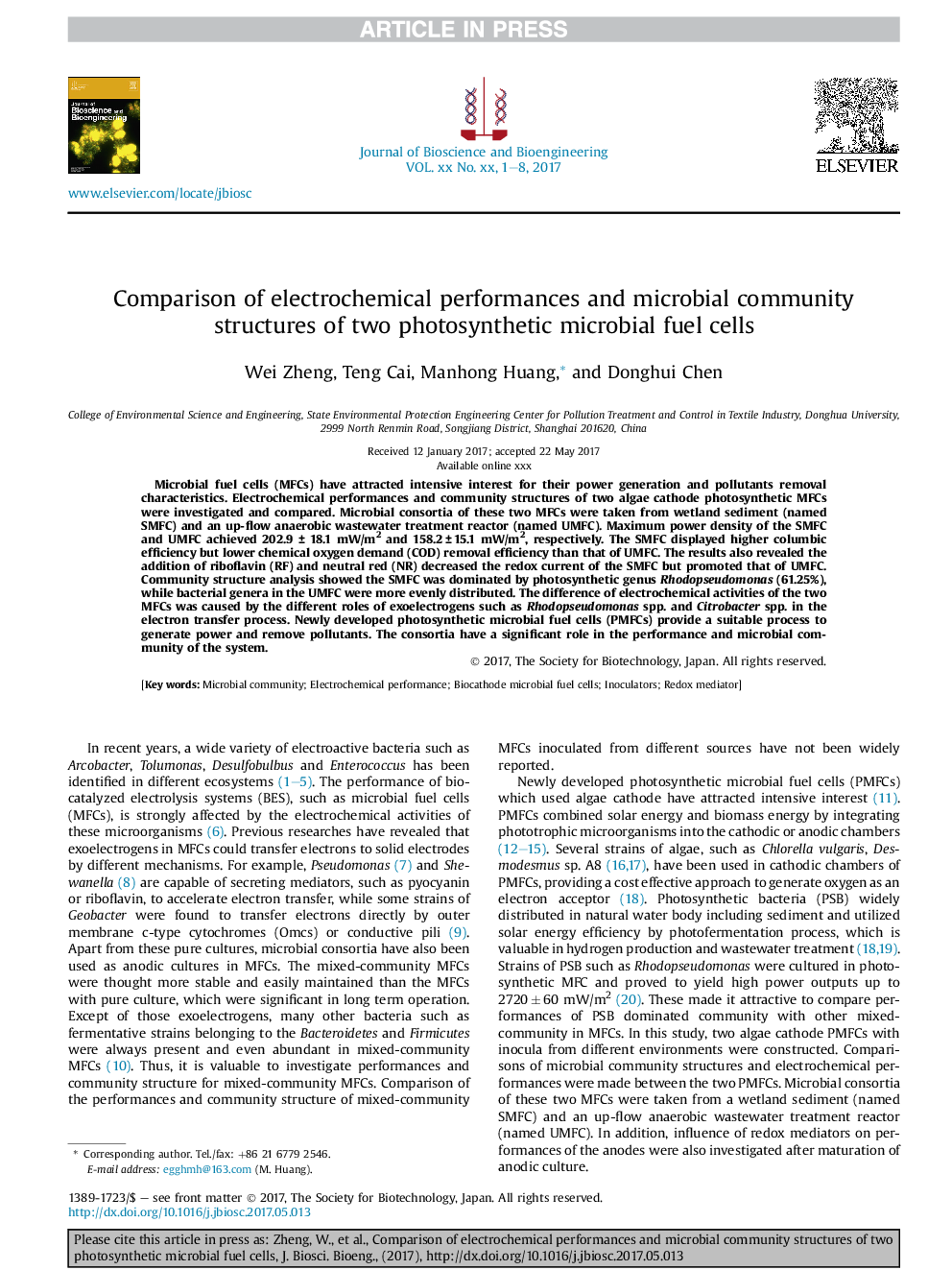| Article ID | Journal | Published Year | Pages | File Type |
|---|---|---|---|---|
| 4753212 | Journal of Bioscience and Bioengineering | 2017 | 8 Pages |
Abstract
Microbial fuel cells (MFCs) have attracted intensive interest for their power generation and pollutants removal characteristics. Electrochemical performances and community structures of two algae cathode photosynthetic MFCs were investigated and compared. Microbial consortia of these two MFCs were taken from wetland sediment (named SMFC) and an up-flow anaerobic wastewater treatment reactor (named UMFC). Maximum power density of the SMFC and UMFC achieved 202.9 ± 18.1 mW/m2 and 158.2 ± 15.1 mW/m2, respectively. The SMFC displayed higher columbic efficiency but lower chemical oxygen demand (COD) removal efficiency than that of UMFC. The results also revealed the addition of riboflavin (RF) and neutral red (NR) decreased the redox current of the SMFC but promoted that of UMFC. Community structure analysis showed the SMFC was dominated by photosynthetic genus Rhodopseudomonas (61.25%), while bacterial genera in the UMFC were more evenly distributed. The difference of electrochemical activities of the two MFCs was caused by the different roles of exoelectrogens such as Rhodopseudomonas spp. and Citrobacter spp. in the electron transfer process. Newly developed photosynthetic microbial fuel cells (PMFCs) provide a suitable process to generate power and remove pollutants. The consortia have a significant role in the performance and microbial community of the system.
Related Topics
Physical Sciences and Engineering
Chemical Engineering
Bioengineering
Authors
Wei Zheng, Teng Cai, Manhong Huang, Donghui Chen,
